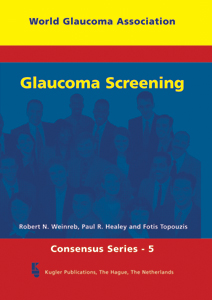advertisement

WGA Consensus Series

Robert N. Weinreb
Introduction
The Glaucoma Consensus Initiative of the World Glaucoma Association is based on the idea that the collective wisdom of a group is better than the opinion of a single expert. Assembling a sufficiently large and sufficiently diverse group of glaucoma specialists and scientists provides recommendations and insights that are likely to be superior to those of a single clinician. These recommendations and insights form the foundation for the Glaucoma Consensus Reports.
To prepare each of the 10 consensus reports, there were several months of active discussion via the Internet by more than 100 expert members of the various consensus committees. The preliminary documents were circulated to each of the member societies of the World Glaucoma Association, and additional comments were solicited. Participants were asked to review the international peer-reviewed literature, with special attention to the quality of available evidence. A Consensus Meeting attended by the experts and society representatives was then conducted. Consensus points were formulated and the report revised by the Consensus Panel following these discussions.
The clinical acumen and knowledge of numerous and diverse practitioners and scientists can be harnessed more efficiently and effectively than ever with the continued enhancements of inter-connected global communication. We can learn from each other by sharing, adapting and updating new information, and then agreeing on its significance. Linking networks of glaucoma specialists has tangible and ongoing important implications for, glaucoma clinical care, research and education on a global basis.
Consensus 5
Glaucoma Screening

edited by:R.N. Weinreb, P.R. Healey and F. Topouzis
2008
From the preface
This was the fifth WGA Consensus Meeting.
As with other consensus topics, the discussion and conclusions of Glaucoma Screening,
the subject for the 2008 consensus, had a broad impact.
The global faculty, consisting of leading authorities on various aspects of glaucoma screening, met in Fort Lauderdale on April 26, 2008 to discuss the reports and refine the consensus statements. The Consensus Panel also met at that time, as well as electronically during the subsequent four weeks. Obtaining consensus on how best to conduct glaucoma screening was quite a challenge, especially since the epidemiology and testing paradigms are so different for open-angle and angle-closure glaucoma. As with the previous WGA consensuses, the Glaucoma Screening consensus was based on the published literature and expert experience. The goal of this consensus was to establish the best practice for glaucoma screening, as well as to identify those areas for which we have little evidence and, therefore, need additional research.
We hope that this consensus will serve as a benchmark of our understanding, and that it will be revised and improved with the emergence of new evidence.
Table of contents
Preface
Welcome
SCREENING FOR OPEN-ANGLE GLAUCOMA (OAG)
Is OAG an important health problem?
Co-chairs: Anders Heijl, Paul Lee
Is there an accepted and effective treatment for patients with the disease that
is more effective at preventing morbidity when initiated in the early, asymptomatic
stage than when begun in the later, symptomatic stages?
Co-chairs: Makoto
Araie, Linda Zangwill
Are facilities for diagnosis and treatment available?
Co-chairs: Paul
R. Healey, Ramanjit Sihota
Is there an appropriate, acceptable, and reasonably accurate screening test?
Co-chairs: Augusto Azuara Blanco, Linda Zangwill
Is the natural history of the condition, including development from latent to
manifest disease, adequately understood?
Co-chairs: Anders Heijl, Harry
Quigley
Is the cost of case finding (including diagnosis and treatment of patients diagnosed)
economically balanced in relation to possible expenditure on medical care as a whole?
Co-chairs: Paul R. Healey, Anja Tuulonen
SCREENING FOR PRIMARY ANGLE CLOSURE AND PRIMARY ANGLE-CLOSURE GLAUCOMA
Are angle closure (AC) and angle-closure glaucoma (ACG) important health problems?
Co-chairs: Paul Foster, Mingguang He
Is there an accepted and effective treatment for patients with angle-closure
glaucoma (ACG) that is more effective at preventing morbidity when initiated in
the early, asymptomatic stage than when begun in the later, symptomatic stages?
Co-chairs: Robert Ritch, Clement Tham
Are facilities for diagnosis and treatment available?
Co-chairs: Robert
Ritch, Jim Standefer
Is there an appropriate, acceptable, and reasonably accurate screening test?
Co-chairs: Tin Aung, Winnie Nolan
Is the natural history of the condition, including development from latent to
manifest disease, adequately understood?
Co-chairs: Paul Foster, Ravi Thomas
Is the cost of case finding (including diagnosis and treatment of patients diagnosed)
economically balanced in relation to possible expenditure on medical care as a whole?
Co-chairs: David Friedman, Steve Kymes
Photo Section
Index of Authors
Summary of Consensus Points
Through the courtesy of the WGA and Kugler Publications, you may now download the PDF files of Consensus 1-5 WGA#One account.
Robert N. Weinreb, MD
Consensus Initiative Chair
World Glaucoma Association
